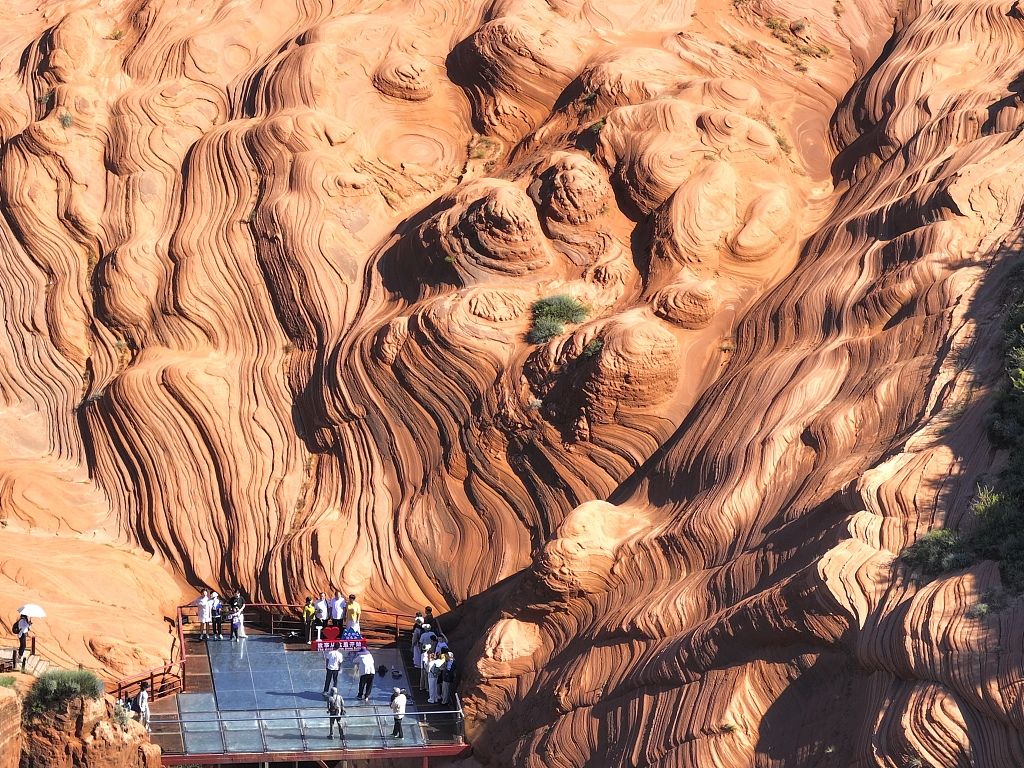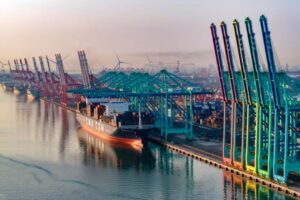
Following the recent rains, the distinctive wave formations of the Danxia landscape in the Valley of Waves in Jingbian, Yulin City, Shaanxi Province, became even more pronounced, offering a stunning spectacle of natural beauty that captivated numerous tourists.
The rainwater accentuated the contours and enhanced the strong colours of the red soil of the rock formations, creating a visual spectacle that not only allowed visitors to appreciate the extraordinary natural beauty of the place, but also offered a unique tourist experience.
The contrast between the layers of red rocks and the soft reflections of the water on the undulating surface made the landscape look even more dramatic, attracting photographers and tourists looking to capture the magnificence of this natural environment.
The term Danxia refers to a type of landform formed on red sedimentary beds, composed of sandstone and conglomerates dating back to the Cretaceous. These sedimentary strata were uplifted by tectonic movements and, over time, erosion and weathering shaped a series of unique geographical features, such as steep cliffs, deep valleys, towers, pillars, and ravines.
This UNESCO World Heritage site includes six areas in the subtropical zone of southwest China, characterized by towering red cliffs and various erosion forms, such as pillars, towers, ravines, valleys and waterfalls.
The distinctive red soil of the region is due to the composition and origin of the sedimentary rocks that make it up. This color is mainly due to the presence of iron oxides in the sediments that form the rocks.
During the Cretaceous period, between 145 and 66 million years ago, natural ground movements and atmospheric phenomena deposited large amounts of sand, silt and clay in sedimentary basins and formed layers of sediment. These layers eventually compacted and cemented together to create sandstones and conglomerates. The iron present in these sediments oxidized, producing a reddish color. This process is similar to that which occurs when iron oxidizes and turns into iron oxide, such as that seen in rust on metal objects.
In addition to the oxidation of iron itself, the prolonged exposure of these rocks to natural atmospheric factors, such as rain, wind and sun, has contributed to maintaining and accentuating the red colour of the landscape.
Over time, tectonic movements uplifted the sedimentary strata and subsequent erosion sculpted the surface to give rise to the present dramatic and distinctive landforms of Danxia.
China-Indonesia dialogue promises to safeguard regional stability
The Wave Valley in Jingbian is famous mainly for its wave formations, which resemble petrified waves. This is the manifestation of a natural phenomenon called selective erosion, which has worn away the rocks in an irregular manner, creating smooth curves and flowing lines that seem to be frozen in time.
These structures not only provide a more detailed understanding of the geological history of the site, but also reveal the ongoing interaction and impact of natural elements such as wind and water, which continue to shape the landscape.
In addition to having aesthetic and geological value, the Danxia region as a whole is also an important ecological refuge. The rugged terrains of these formations are home to subtropical evergreen forests, which have adapted to the extreme conditions of the region.
These forests have created important ecosystems. They are home to a vast diversity of flora and fauna, including around 400 species of both rare and endangered plants and animals. Some of these species are endemic to the region and are found nowhere else in the world. This fact underlines the importance of conserving these stunning landscapes, not only because of their natural beauty, but also because of their unique biodiversity.

Source: https://reporteasia.com/economia/turismo/2024/08/18/esplendor-danxia-valle-de-las-olas/

